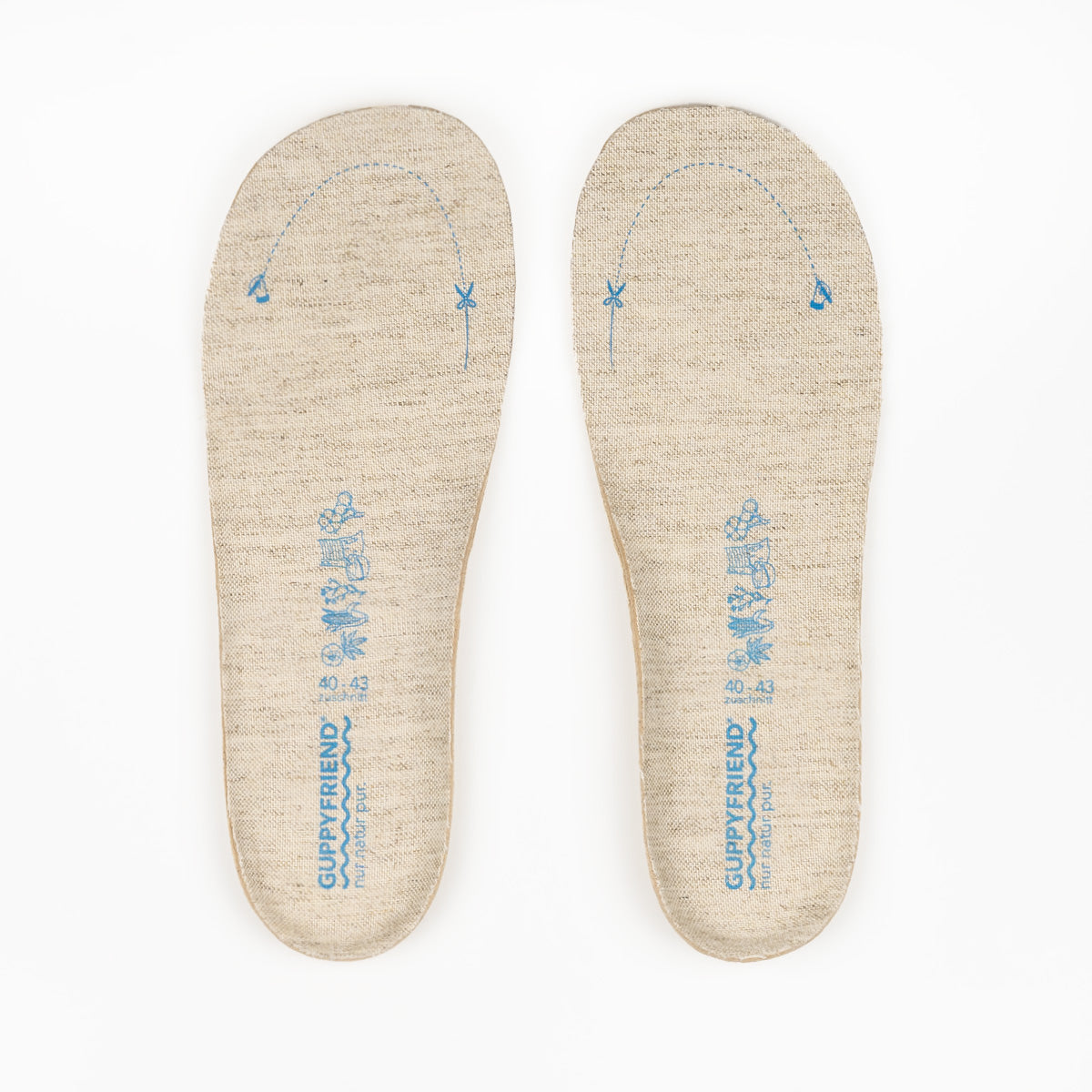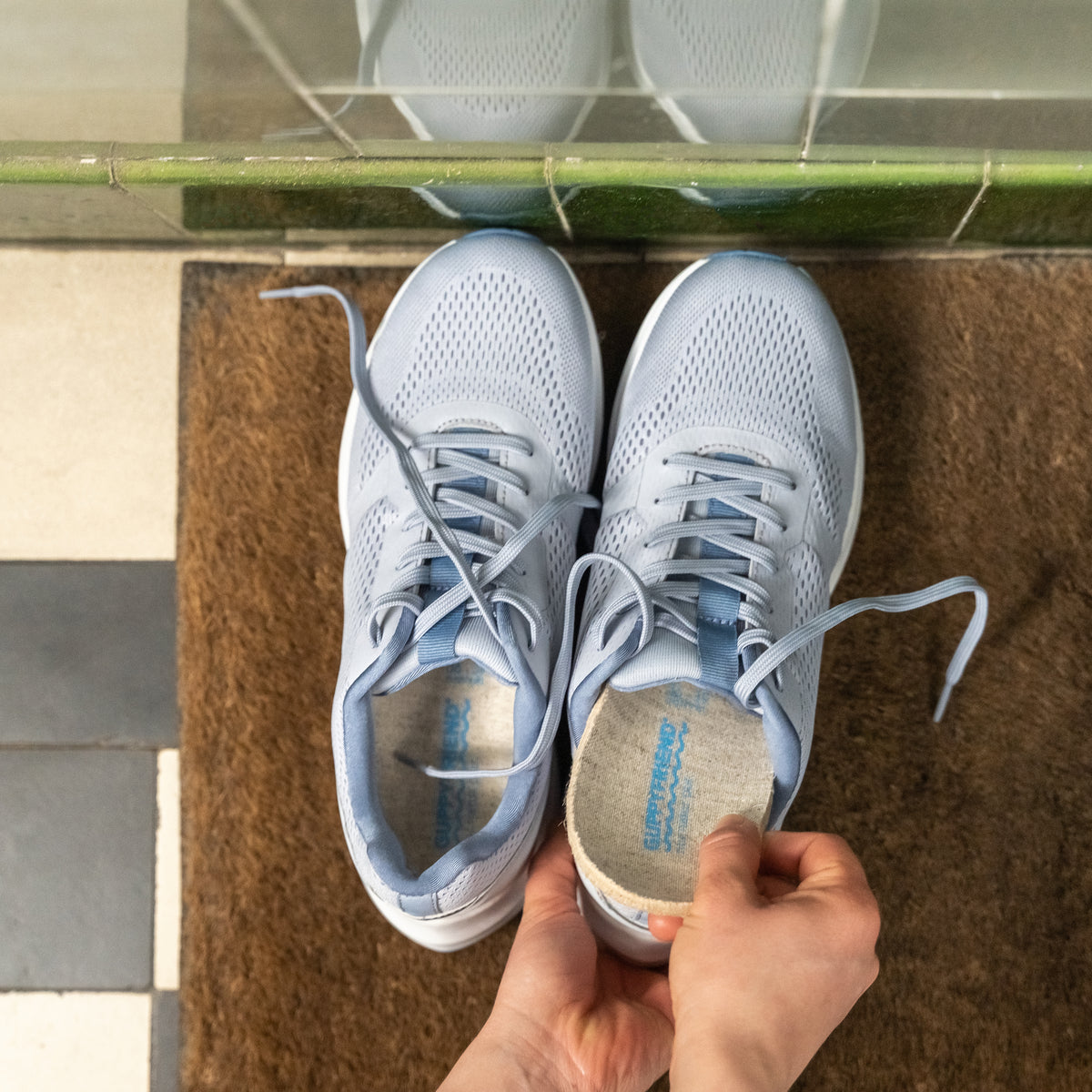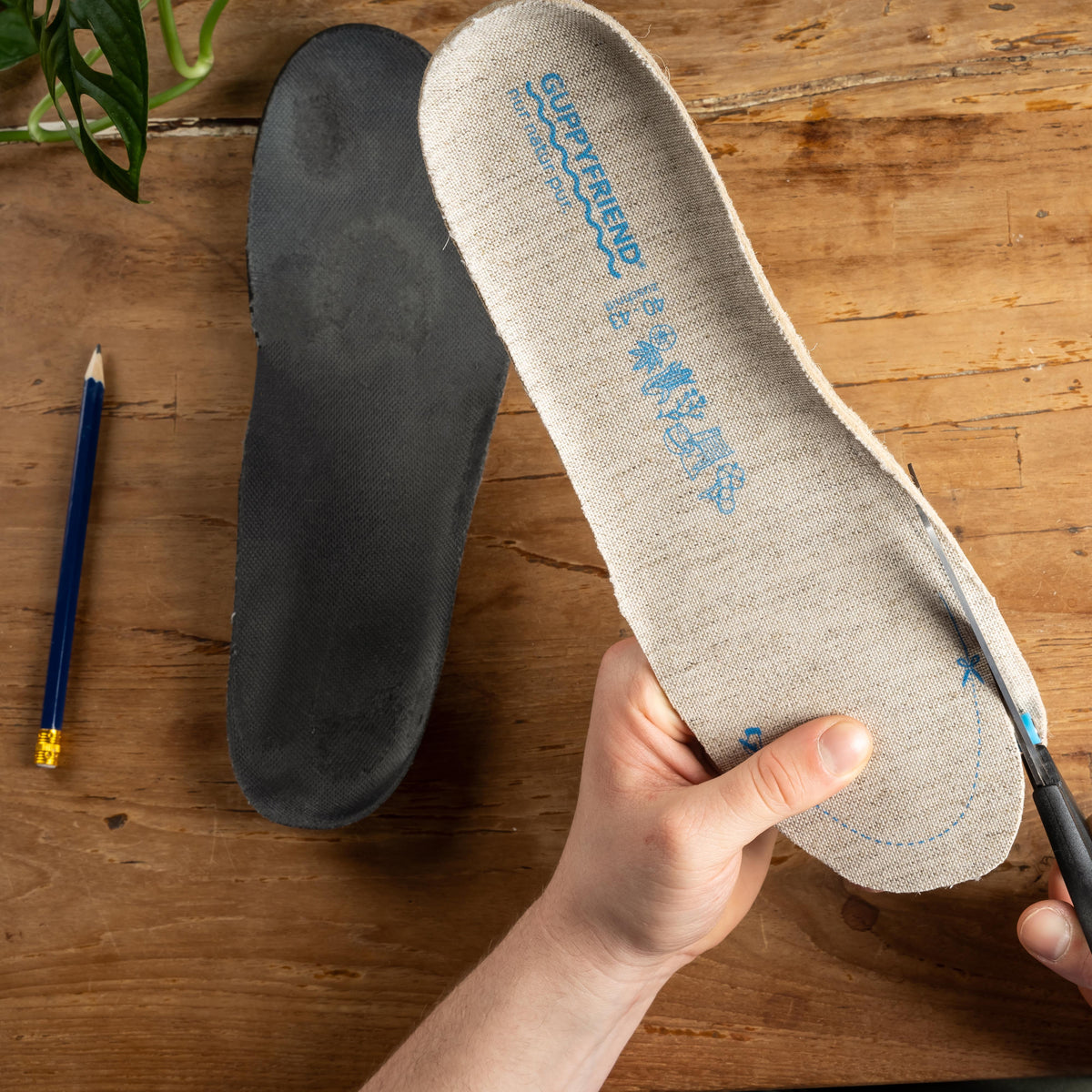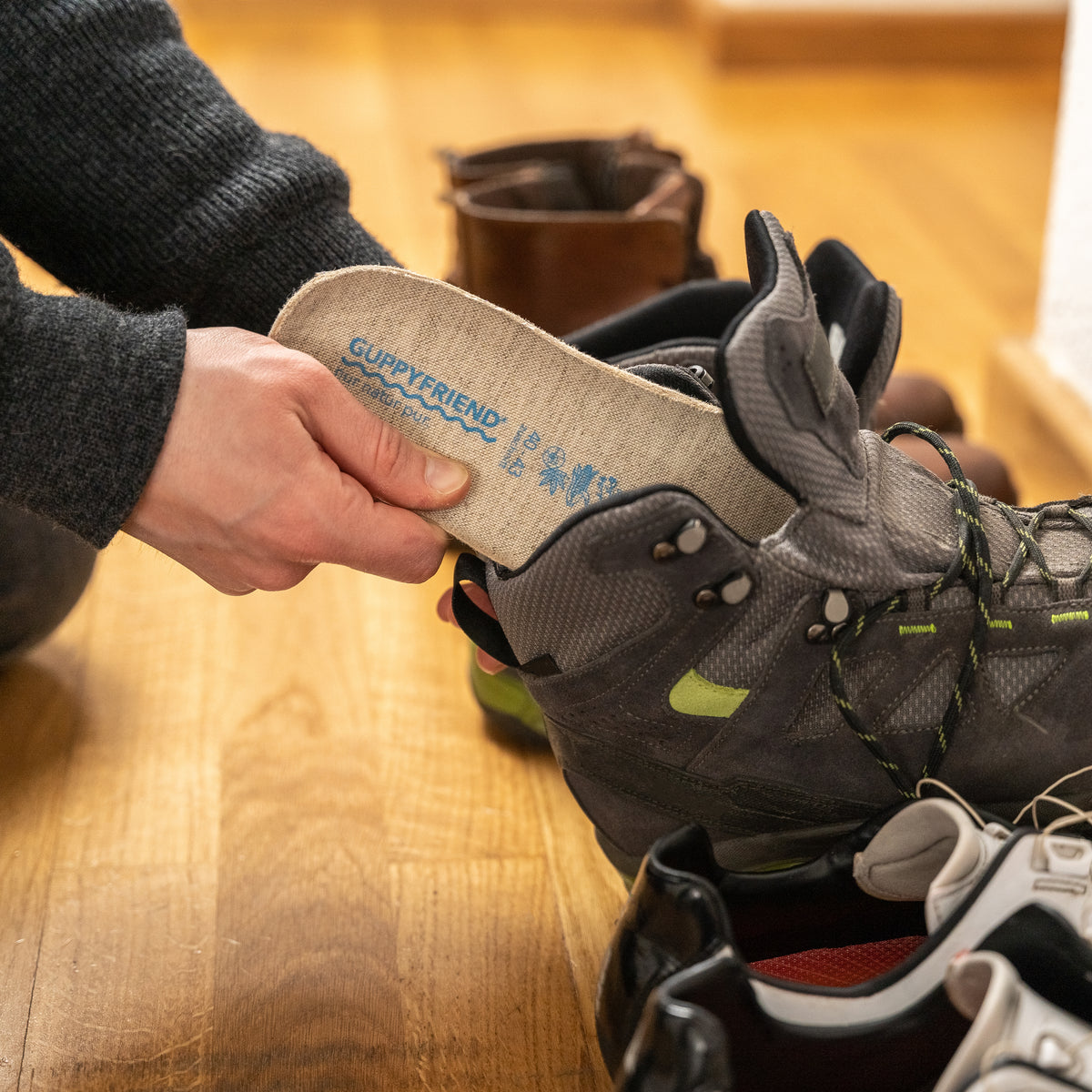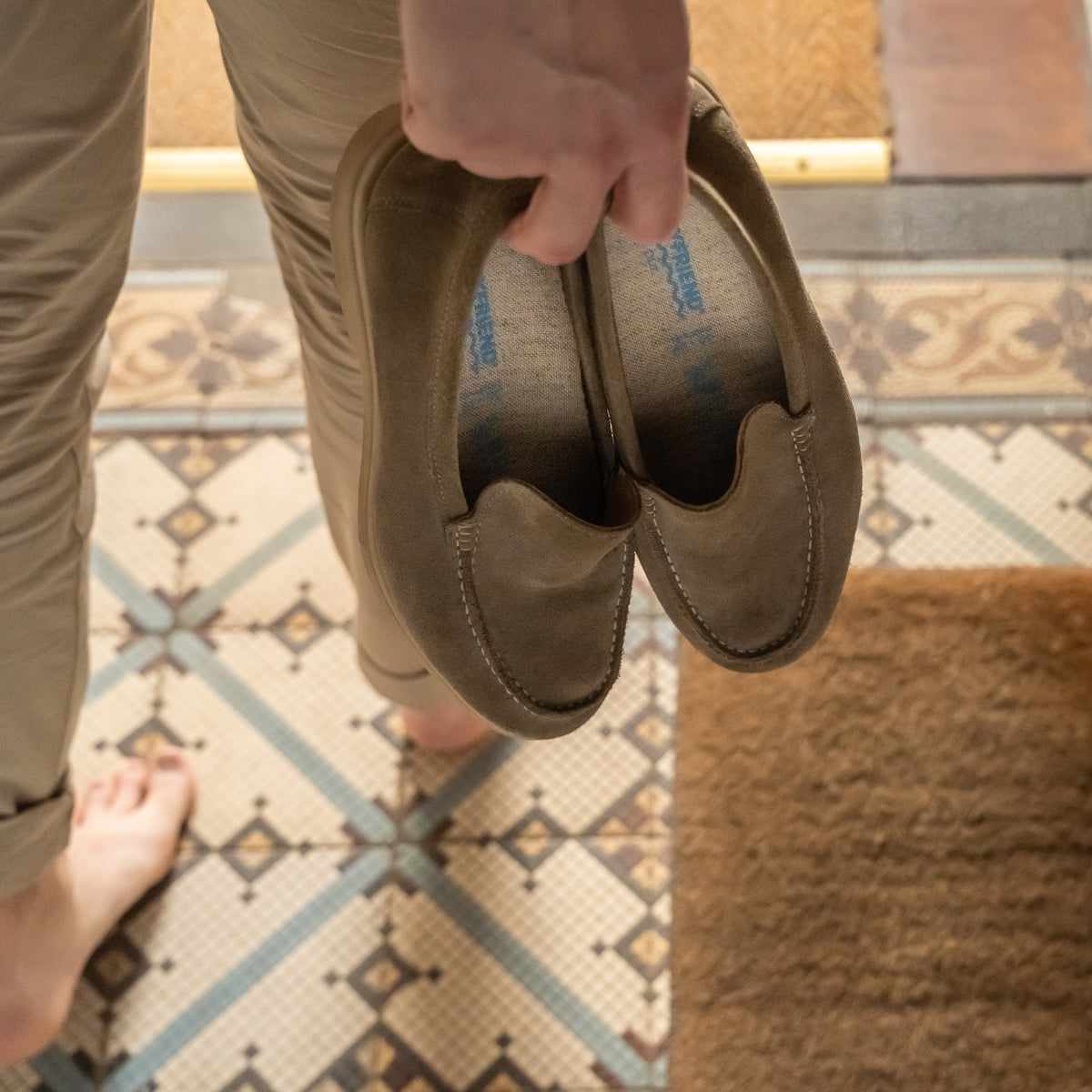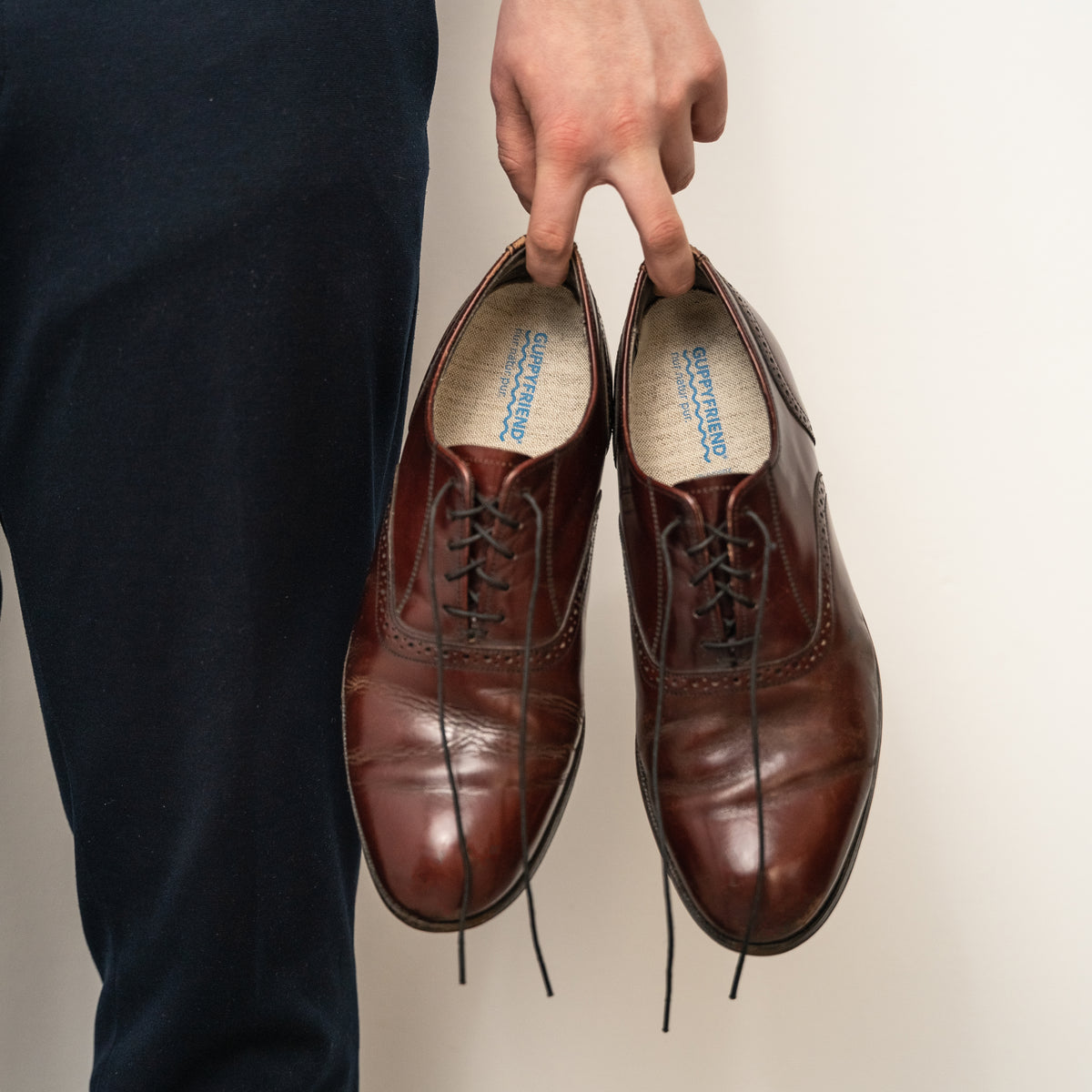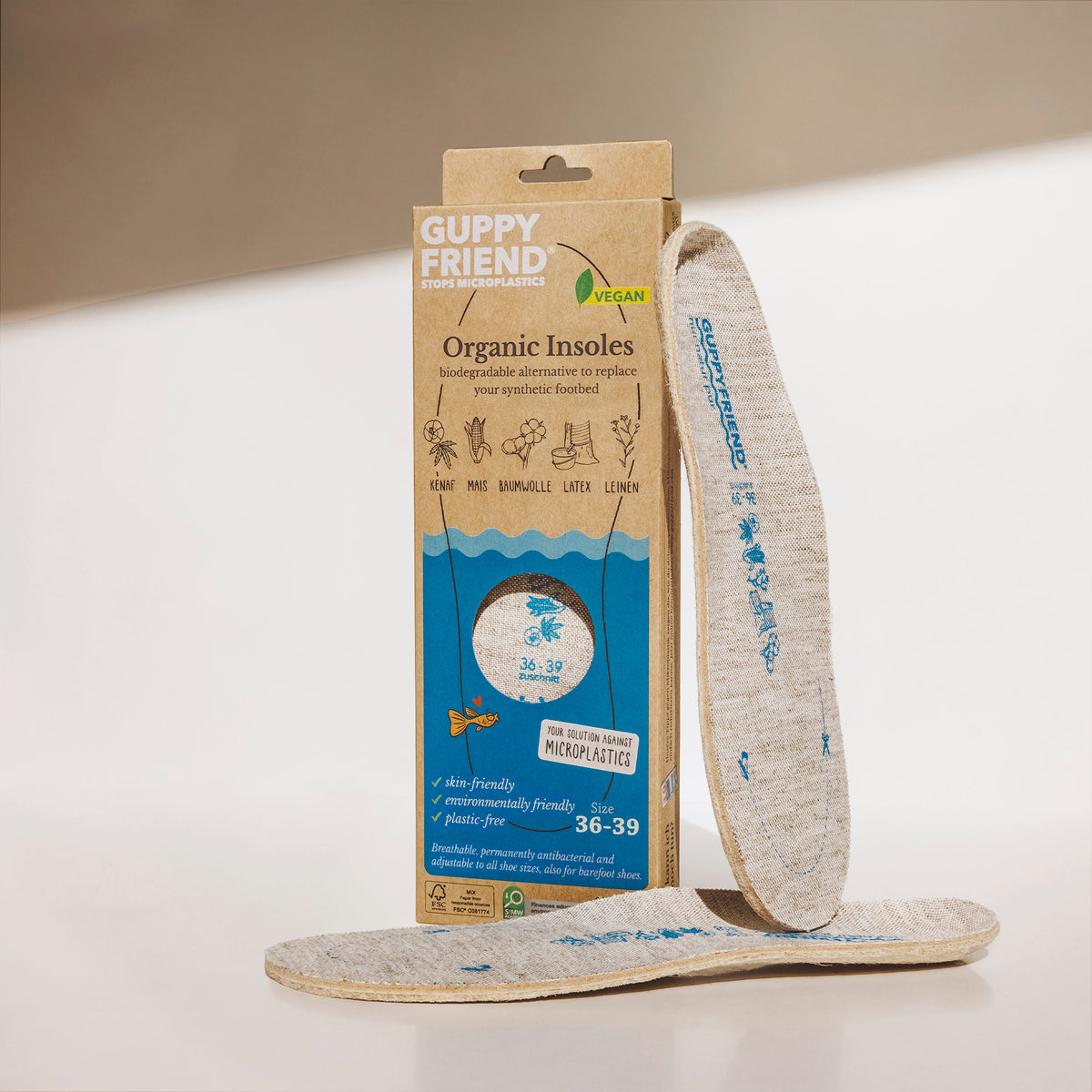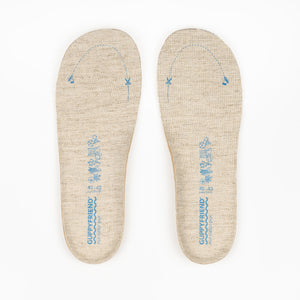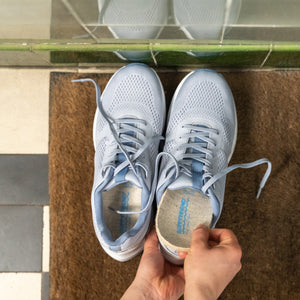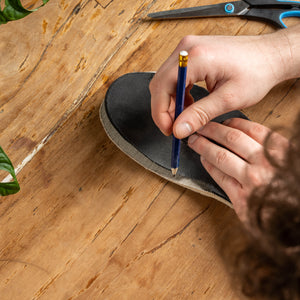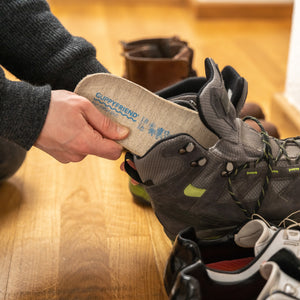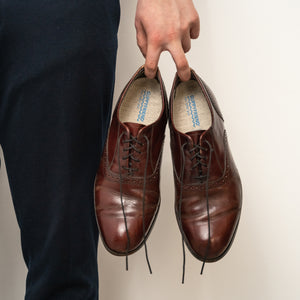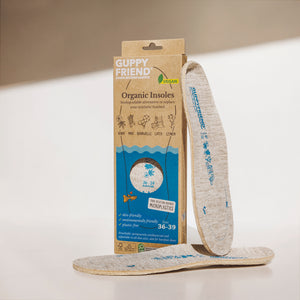Shoe insoles, also called "insoles," are predominantly made of expanded foam sheets (mostly Polyurethane – or PU for short). Unfortunately, these thermally deformed materials are only resistant to water, heat, light and sweat to a minimal extent. Due to the conditions prevailing inside the shoe (warm and humid climate and mechanical stress), increasing abrasion of the foam material is inevitable – even with occasional use. In addition, these inner sole materials age rapidly and lose their mechanical resistance after only a few weeks. So, in addition to the microplastics created by abrasion, a significant amount of waste is also generated by the necessary replacement of aging inner soles.


